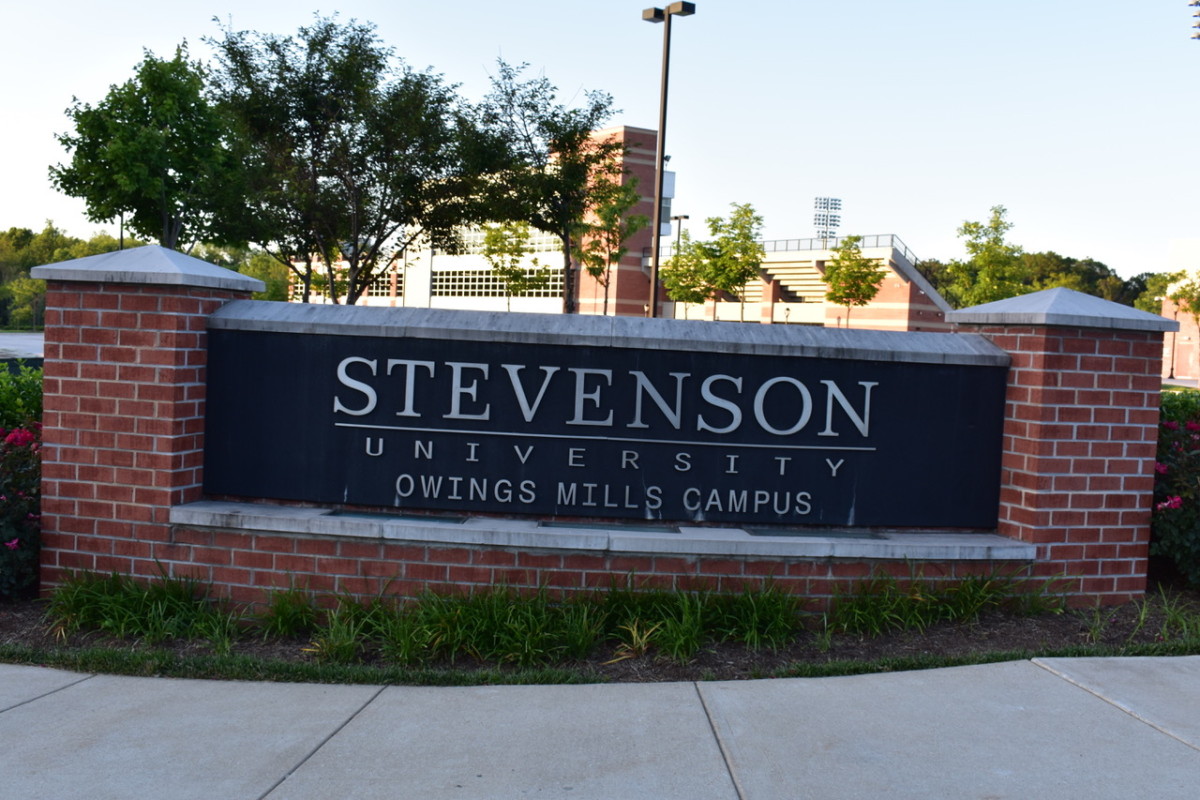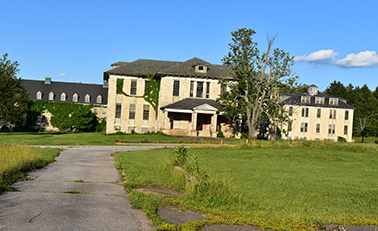 Some 117 acres of the former Rosewood Center property that once housed more than 2,000 developmentally disabled patients has been acquired by Stevenson University.
Some 117 acres of the former Rosewood Center property that once housed more than 2,000 developmentally disabled patients has been acquired by Stevenson University.
The Maryland Board of Public Works voted unanimously on June 7 to approve the sale of 117 of 178 acres of the state-owned property in Owings Mills to Stevenson University for $1. Stevenson has been interested in acquiring the surplus property to expand its education program and athletic fields.
The university’s two Owings Mills campuses abut the Rosewood property, which closed in 2009 after the remaining few hundred patients were transferred to Springfield Hospital Center, other state facilities and community-based group homes.
The Rosewood property sits in the center of the booming Owings Mills community, where Foundry Row opened last fall, Metro Centre continues to grow with plans for a hotel and housing, and other development is planned for Reisterstown Road shopping centers and Owings Mills Mall.
As you travel up Rosewood Lane from Reisterstown Road, you pass several apartment buildings before you reach the expanse of the Rosewood site. A sign informs visitors that Rosewood Lane will permanently close to through traffic around December 2009. Among the remaining 30 or so dilapidated buildings re those that once served as a jail for court-ordered forensic patients, a hospital, and a morgue, where deceased patients were transported through a tunnel. Many with sprawling moss, broken windows and crumbling pathways have the look of structures from a horror movie.
Kevin Manning, the former president of Stevenson who retired last fall, is credited with realizing the vision for the growing university’s expansion. The university first expressed interest in acquiring the property as early as 2000 and conducted an environmental survey of the site in 2009 and 2010. The state declared the property surplus property in 2010, paving the way for the transfer of land.
Stevenson noted in a statement that the acquisition will nearly double the total acreage of the university. “While no final plans for the site have been determined, the agreement calls for Stevenson to use the site for educational purposes. The university’s tentative plans, after completion of environmental clean-up and remediation, include developing new educational facilities and recreational resources for its students and the community.”
According to Tim Campbell, executive vice president for financial affairs and chief financial officer for Stevenson, “The vacant buildings and possible environmental contaminants on the site have been the concern of the surrounding community and the District 11 delegation for many years.”
Stevenson University thanked the community for its support, District 11 legislators and Sen. James DeGrange of District 32 and District 10 Del. Adrienne Jones, chair of their respective chambers’ capital budget subcommittees, for moving the project along. The state has funded the costs for much of the asbestos removal. The 2018 fiscal year capital budget includes $5 million for abatement work.
District 11 legislative team members Sen. Bobby Zirkin and Delegates Shelly Hettleman, Dan Morhaim and Dana Stein gave remarks at the meeting of the Board of Public Works meeting. They thanked the Governor and former Stevenson University president Kevin Manning for his leadership and vision.
Referring to the property as a “contaminated eyesore,” Del. Dana Stein called the acquisition a “great win for the Owings Mills community and Stevenson University.” The property will be used for educational and recreational purposes, as well as green space for the community.
Bobby Zirkin has taken the lead for making this deal happen and deserves a lot of credit for championing the district’s efforts from the time Stevenson University expressed interest, Stein said. “Senator Zirkin worked with different administrations to help to clear roadblocks in the process.”
In response to Comptroller Peter Franchot’s question about the timeline, Manning told the board he expects the site will be developed “holistically” over the next 10 years, but that the university must first deal with the remediation and environmental issues, which have to be completed within the next three years.
“We’ve been working pretty extensively for the past five years,” Manning said. He added that the community, as well as the new president, faculty and staff, will be involved. “You’ll really see progress in a year, and some progress in the next two months.” Manning, who retired as president last year, said the university is “very respectful and very aware of the Rosewood history” and that they hope to do collaborative work with the ARC, an organization that advocates for equal rights for people with intellectual and development disabilities.
In her remarks, ARC board president elect Laura Carr urged Stevenson to, in collaboration with the state and community for the developmentally disabled, consider possible opportunities to support people with intellectual and developmental disabled for jobs on the new campus, scholarship offers and to collaborating with the disabled community to develop a history of Rosewood that would live in the university’s library.
First opened in 1889 as Asylum and Training School for the Feeble-Minded and later for developmentally disabled patients with a mission to train and educate the residents. It originally sat on 690 acres.
After three name changes it became Rosewood Center in 1969. Over the years, there were complaints about inadequate patient care, neglect and abuse, and at one time the Department of Justice conducted a civil rights investigation for poor treatment and other charges.
Over the years, as disabled people were moved from institutions to community settings, the population dwindled to a few hundred at the time the Maryland Department of Health and Mental Hygiene closed it on June 30, 2009.
There have been incidences of arson and other problems. In what was a surprise to many, the Baltimore City Police Department was using the Rosewood grounds for training. In 2013, a training supervisor shot a law enforcement trainee in the head with a live weapon during a training exercise.

